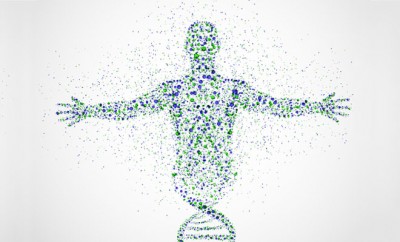
The Toxic Side of Being, Literally, Green
LONDON — As Kermit the Frog sang so wisely, it’s not easy being green. Think of Britain’s wannabe prime minister, David Cameron, cycling to Parliament followed by a limo carrying his papers. The “organic” products that are smothered by superfluous biodegradable packaging. And “caring” celebrities who blow their eco-cool by flying into environmental protests on private jets.
Even those deluded celebs don’t seem as daft as the 265 ton “iceberg” built by Chanel as the set for a recent fashion show in Paris. Made from ice and snow imported from Sweden, it was “recycled” afterward by being returned there in yet another gas-guzzling journey. Presumably it was meant to make me crave a new Chanel bag, but all I could think of were those heartbreaking photographs of polar bears marooned on melting ice caps.
Kermit was correct, being green really is tough, so tough that the color itself fails dismally. The cruel truth is that most forms of the color green, the most powerful symbol of sustainable design, aren’t ecologically responsible, and can be damaging to the environment.
“Ironic, isn’t it?” said Michael Braungart, the German chemist who co-wrote “Cradle to Cradle,” the best-selling sustainable design book, and co-founded the U.S. design consultancy McDonough Braungart Design Chemistry. “The color green can never be green, because of the way it is made. It’s impossible to dye plastic green or to print green ink on paper without contaminating them.”
This means that green-colored plastic and paper cannot be recycled or composted safely, because they could contaminate everything else. The crux of the problem is that green is such a difficult color to manufacture that toxic substances are often used to stabilize it.
Take Pigment Green 7, the commonest shade of green used in plastics and paper. It is an organic pigment but contains chlorine, some forms of which can cause cancer and birth defects. Another popular shade, Pigment Green 36, includes potentially hazardous bromide atoms as well as chlorine; while inorganic Pigment Green 50 is a noxious cocktail of cobalt, titanium, nickel and zinc oxide.
If you look at the history of green, it has always been troublesome. Revered in Islamic culture for evoking the greenery of paradise, it has played an accident-prone role in Western art history. From the Italian Renaissance to 18th-century Romanticism, artists struggled over the centuries to mix precise shades of green paint, and to reproduce them accurately.
Even if they succeeded, the results often faded or discolored, as did green dyes. When the 19th-century British designer William Morris created wallpapers inspired by medieval tapestries, he copied the blue hues in the originals. But most of those “blues” were really greens, which had changed color over the years.
Green even has a toxic history. Some early green paints were so corrosive that they burnt into canvas, paper and wood. Many popular 18th- and 19th-century green wallpapers and paints were made with arsenic, sometimes with fatal consequences. One of those paints, Scheele’s Green, invented in Sweden in the 1770s, is thought by some historians to have killed Napoleon Bonaparte in 1821, when lethal arsenic fumes were released from the rotting green and gold wallpaper in his damp cell on the island of Saint Helena.
This noxious heritage should have been forgotten after green’s reinvention as a symbol of ecological purity by environmental protesters in the early 1970s.
It was a perfect choice as their emblem. One reason is, of course, that green is the color of nature. Another is that its natural associations had made it unpopular with the Modern Movement. This enhanced its appeal to early environmentalists, who rejected Modernism as soulless and destructive.
They were also attracted to the maverick qualities that had bedeviled green in the past. Even today, despite all of the advances in color technology, producing green dyes and pigments is still problematic. “Getting the right tones of artificial green is always difficult, and there’s often something disturbing about the result,” said the Dutch product designer Hella Jongerius. “Whereas all shades of green look beautiful in nature.”
Perhaps because of this, green remains an elusive color. “We can imagine and identify at least as many different shades of green as, say, red or blue, probably more,” explained David Batchelor, a British artist and color theorist. “On the other hand it is less easy to imagine a ‘pure’ green in the way we might think of ‘pure’ red.”
Restless. Anarchic. Technophobic. Nature-loving. Iconoclastic. No wonder the early environmentalists took to green. The love affair began in 1971 when a bunch of Canadian protesters chartered a ship to campaign against nuclear testing in Alaska, and called it “Greenpeace.” They then adopted the same name themselves. By the late 1970s, “Green Parties” were emerging all over the world including “Die Grünen” in Germany, “Groen!” in Belgium and “Les Verts” in France.
When environmentalism went mainstream, green was hijacked by businesses as a visual clue to suggest that this, that or the other product was ecologically sound. Look at the organic food section of a supermarket and you’ll see a sea of green-colored branding and packaging. The same goes for “eco” cleaning products, “sustainable” clothing, and so on.
Green has had a similar effect on the language of design and marketing. Whether we’re talking about “green design,” “green energy,” “green architecture,” “green whatever,” the g-word will be interpreted as shorthand for something that is environmentally responsible — or should be.
It has even spawned pejoratives, like “greenwashing,” which was coined in 1986 by the American environmentalist Jay Westerveld to describe the hotel signs that suggest guests should use fewer towels to save on laundering, supposedly to help the environment, but mostly to increase the hotel’s profits. These days it refers to anyone who makes fake environmental claims.
But greenwashing isn’t the only threat. Next time you’re tempted to buy something in any shade of green, just remember how poisonous that color was in the past, and can be today.
First published at New York Times







